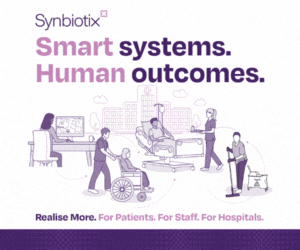Just a few weeks after NHS England published its first rankings of the 44 Sustainability and Transformation Partnerships (STPs), a report by the HSJ has highlighted tension between the need for individual organisations to improve their efficiency and productivity as required by Carter and the obligation to look for system-wide savings by consolidating and sharing back office services, as required by NHSI.
The HSJ referred to the situation recorded in the Norfolk and Norwich Hospitals University Foundation Trust's Board Papers; NHSI's benchmarking has revealed the Trust's support services/back office costs score lower than the national lower cost quartile. As a result of this it was cautioned that plans under discussion to consolidate back office functions with other providers within the Norfolk and Waveney STP (which also includes Queen Elizabeth Hospital in King's Lynn and James Paget) would be unlikely to bring financial benefit to the Trust and may in fact result in the opposite.
This situation raises several key issues. Engaging with the Carter Productivity and Efficiency (PEP) programme requires the sharing and exchange of knowledge and different organisations working together to support each other for the benefit of the wider health economy. As such, it requires organisations to seek-out and embrace the bigger picture, move away from individual silos and accept that the NHS as a whole is funded from the same pot, so it is in everyone's interests for the stronger organisations to help those that may not be as efficient to introduce programmes for change.
There is always room for improvement. The most successful organisations in the world are constantly examining their processes and looking for areas where something could be done better or differently. Is there a danger that simply looking at the bottom line misses the bigger picture? HEFMA President, Tim Litherland, says: "We have to consider the full consequences of productivity (which isn't regularly measured), efficiency being the cost element and then quality, which definitely isn't measured except through empirical data."
Don't get hung by the data
As is so often the case, it comes back down to the data, which in itself is a double-edged sword. In a 'Welcome' column for the July/August 2016 issue of HEFMA Pulse, Simon Rigby, Associate Director of Estates & Facilities at Taunton & Somerset NHS Foundation Trust, issued a plea to all Trusts to double-check their data to ensure it is credible, saying that there is a point at which data must be dismissed because it simply lacks credibility - the classic example being the Trust in the 2014/15 ERIC data that claimed to feed patients for less than £2.50 per meal.
He also promised to contact any Trusts that are in the 'best in class' bracket as his own Trust seeks to achieve 'best in class'
"We have a great opportunity to keep the NHS estate and allied facilities services safe and efficient by embracing and nurturing our business intelligence and working collaboratively," Simon said.
STP ranking
Norfolk and Waveney's STP was ranked as 'Advanced' in the progress dashboard baseline view published in July. Five STPs were ranked as 'Outstanding': Dorset; Durham, Darlington, Tees, Hambleton, Richmondshire and Whiby; Frimley Heath; Milton Keynes, Bedfordshire and Luton; South Yorkshire and Bassetlaw. This rating is driven by indicators in three broad areas: hospital performance, patient-focused change and transformation. These are measured across nine domains: emergency care; elective care; safety; general practice; mental health; cancer; prevention; finance and system leadership.












